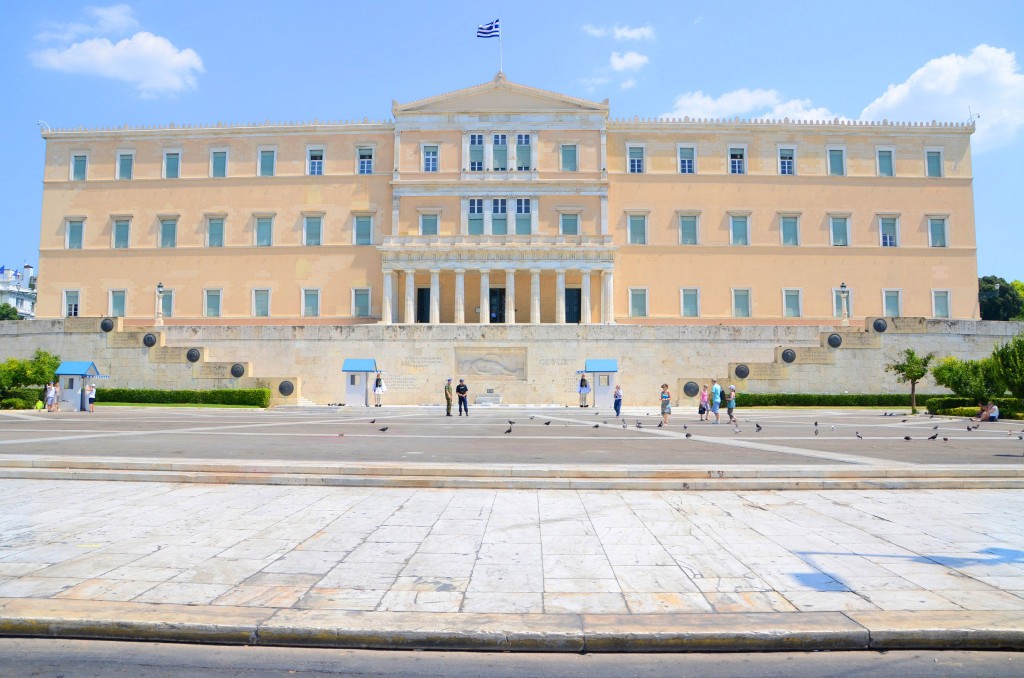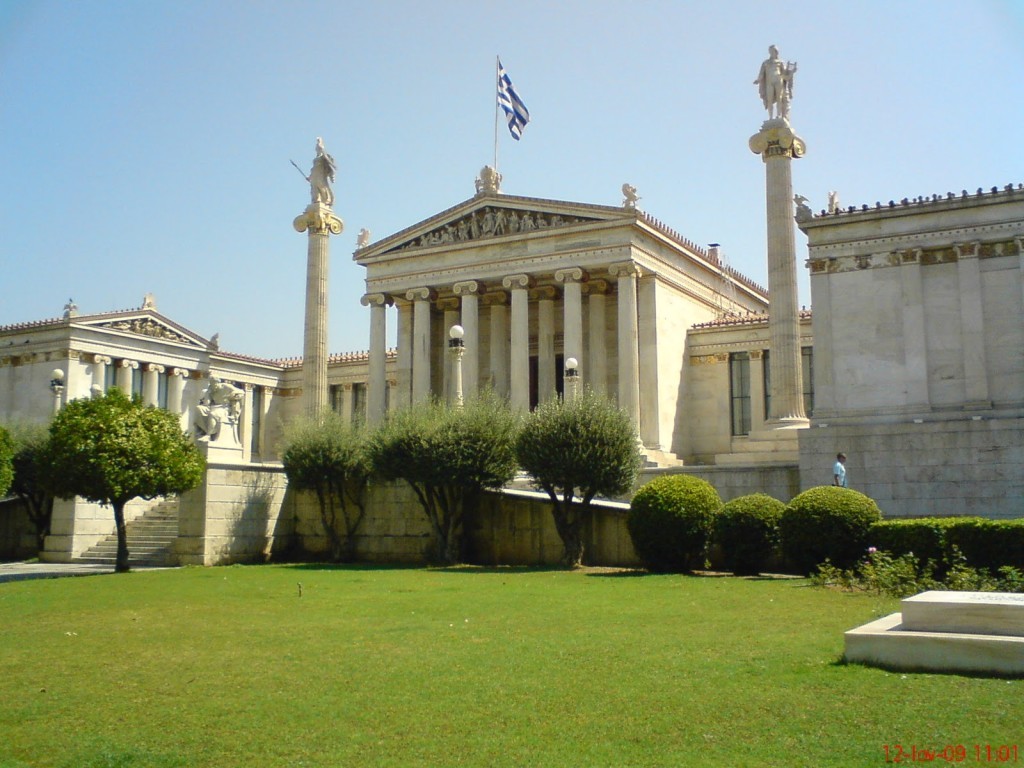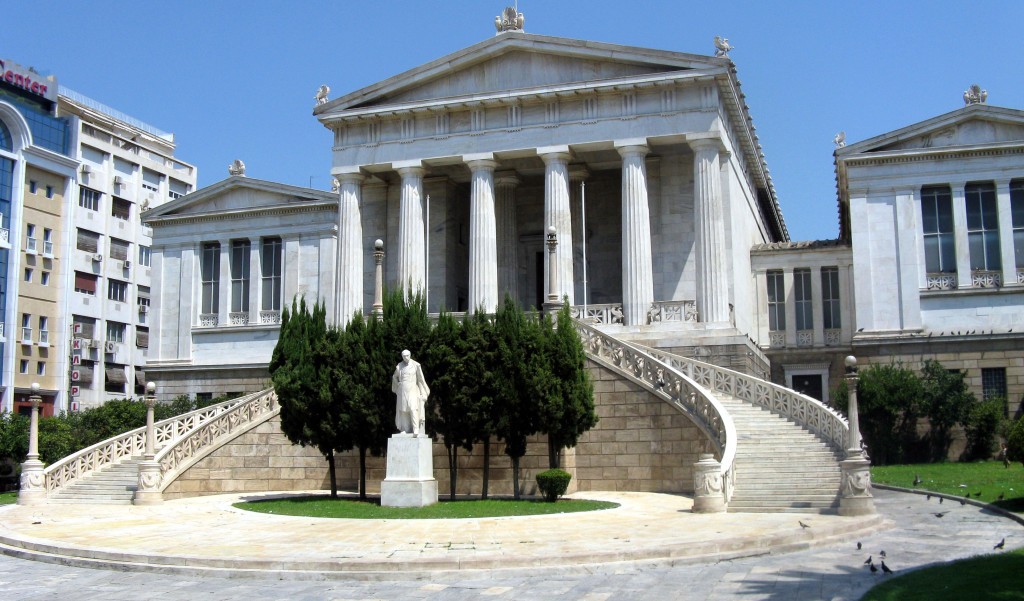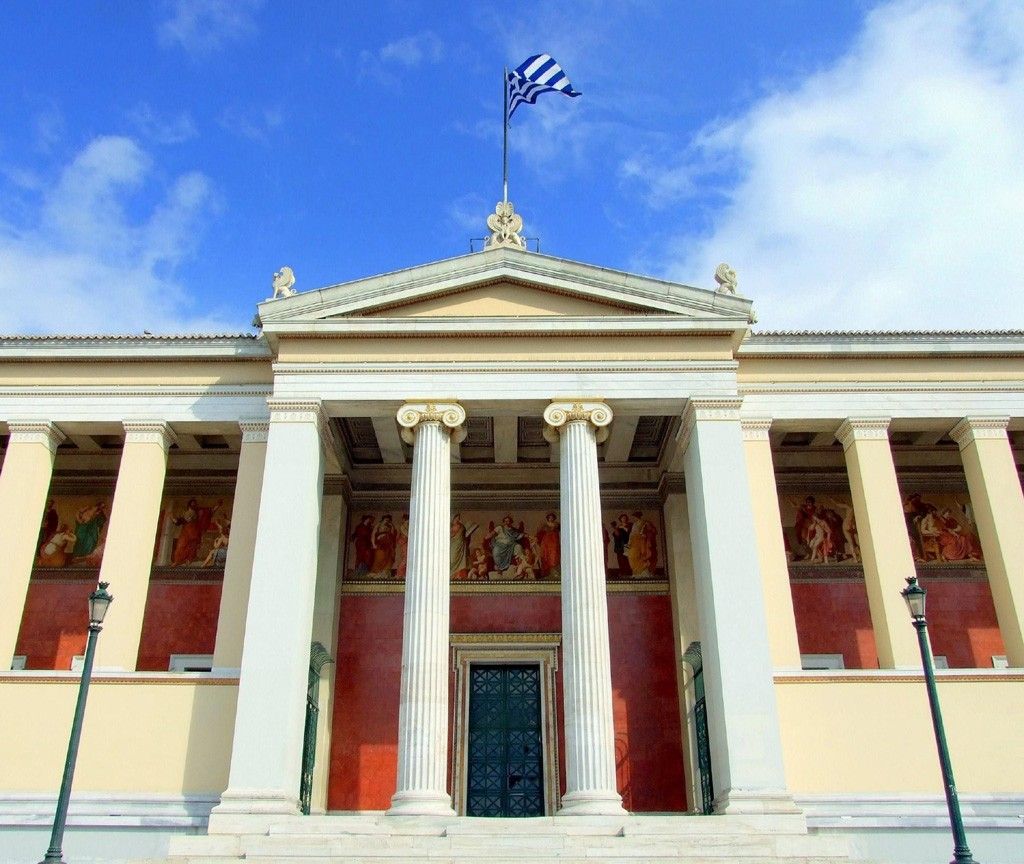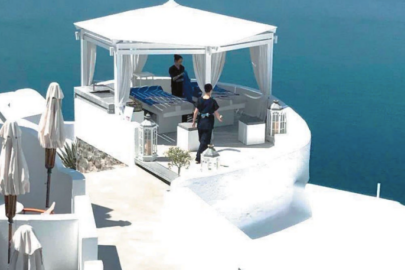Neoclassicism was the main architectural style in Athens up to the 1920’s, which drew inspiration from the classical art and culture of Ancient Greece and Rome. The movement was brought here by German architects, who came to Athens in the beginning of the 1830’s to contribute to the creation of the new city.
Many districts in the historic center still preserve their charming, neoclassic features, and boast of magnificent buildings which add to the beauty of the Greek capital.
1. The Greek parliament
The Greek parliament, a neoclassical three-floor structure designed by Friedrich von Gärtner and completed in 1843, was originally a palace for the Greek monarchs. It has housed the Hellenic Parliament, its offices and archives since 1935.
2. The Academy of Athens
The Academy of Athens is a neoclassical building in the centre of Athens, which was designed in 1859 by the Danish architect Theophil Hansen. The building was used for housing the Numismatic Museum in 1890, and in 1914 the Byzantine Museum and the State Archives. Finally, on 24 March 1926, it was handed over to the newly established Academy of Athens.
3. The National Library of Greece
The National Library is also situated near the center of Athens and it was designed by the Danish architect Theophil Hansen, as part of his famous Trilogy of neo-classical buildings including the Academy of Athens and the original building of the Athens University. It was founded by Ioannis Kapodistrias.
4. Zappeion Hall
The Zappeion Hall is a building in the National Gardens of Athens which is generally used for meetings and ceremonies. A number of historical events have taken place here, including the signing of the documents formalizing Greece’s accession to the European Community in May, 1979.
5. University of Athens
The University of Athens is the oldest and largest building of Hansen’s trilogy, and its construction began in 1839. The frescos in the portico were painted by the Bavarian Karl Rahl. The central painting shows Bavarian king Otto I surrounded by the Muses, while the left hand fresco shows Prometheus bringing fire down from Mount Olympus.


